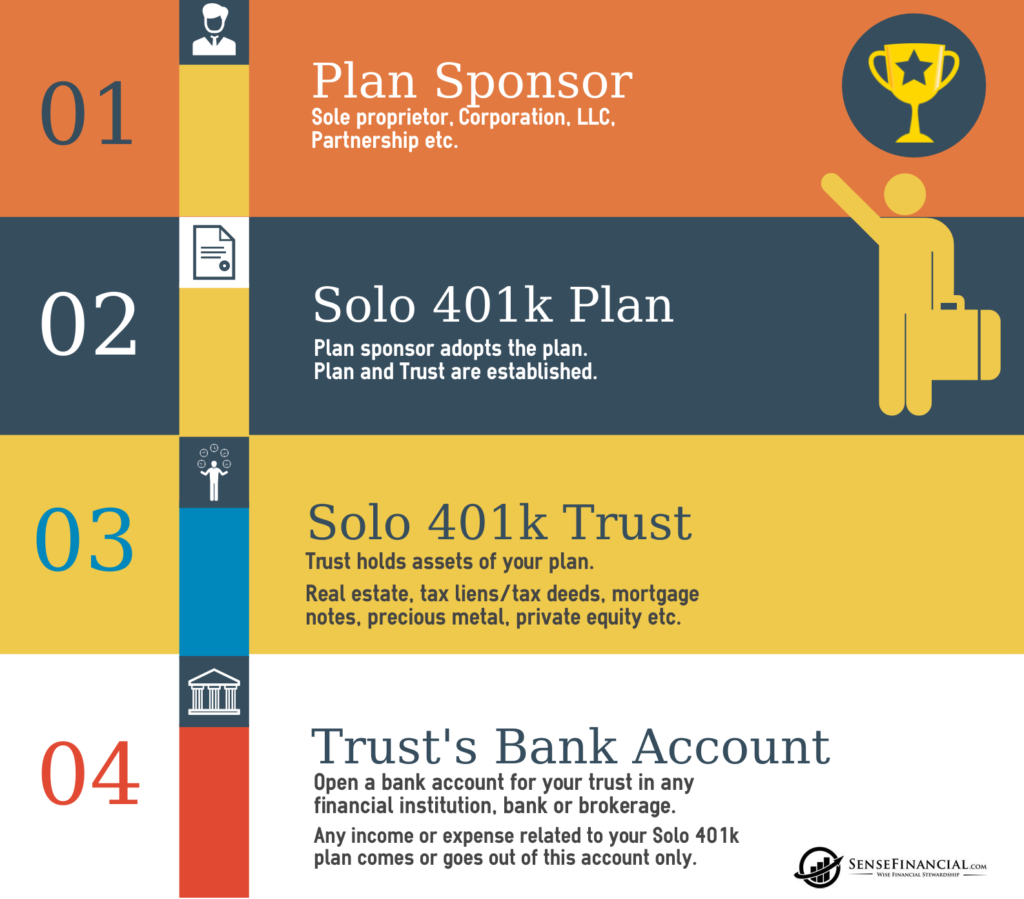401k Infographics: How Does A Self-Directed Solo K Plan Work?
If you’re a self-employed professional or owner-only business, the word ‘Solo 401k’ should resonate with retirement savings. In this post, we’ll find out more about a self-directed Solo k plan and how you can open one.
What is a self-directed Solo 401 k plan?
What is it: A qualified retirement plan targeted at owner-only businesses and self-employment professionals that allow comparatively higher contributions and diverse investment options.
Revised contribution limits for 2017: $54,000
- Elective contributions of up to $18,000
- Profit-sharing contributions of up to 20% to 25% of business income
A Solo 401k plan allows catch-up contributions of up to $6,000 for professionals above 50 years of age, pushing their net contributions to a maximum of $60,000 for the financial year 2017.
How to open a self-directed Solo k plan?
Who can open a Solo 401k plan?
The IRS requires the presence of self-employment activity as eligibility for opening a self-directed Solo k plan. If you’re running a business without any full-time employees apart from your spouse, you’re eligible to start a Solo 401k plan. You can operate with any of the legal structures, starting with a sole proprietorship, partnership, corporation, LLC, and even independent consultant.
Infographic: How to use Solo 401k funds for real estate investing?
Establish Solo 401k plan and trust
If you were facing a legal trial against a customer or service provider, would you fight the trial yourself or look for a qualified lawyer with your best interest at heart? Unless you’ve a strong understanding of the law, the latter would be your choice. The same principle holds while opening a self-directed Solo k plan. Considering a somewhat sophisticated nature of the plan, it’s best to work with a retirement planning expert.
Being the owner of the business, you’ll adopt the Solo 401k plan, and as per the IRS requirement, a Solo 401k trust will be incorporated to hold the assets of the plan. As the plan owner, you can either appoint yourself as the discretionary trustee of the Solo 401k trust or hire a directed trustee to take decisions on your part. A majority of people choose the earlier option, hence utilizing the discretionary investment authority offered in the plan.
Open a checking account for Solo 401k trust
Once the trust is functional, the next step is to open a checking account in its name. You can open a checking account at any financial institution of your choice. This checking account will hold all the investments/assets of your self-directed Solo k plan. Any income generated by your investments or expenses in their maintenance will go through this checking account.
Rollover your retirement funds
It is time to fund your Solo 401k plan. The IRS allows qualified rollovers from 401k, 403b, thrift savings plan, traditional IRAs, SEP IRA, SIMPLE IRA, defined benefit plan, and Keogh plans. However, the IRS doesn’t allow rollover from a Roth IRA, imposing some restrictions for post-tax contributions. Your retirement planner would be able to provide necessary forms to facilitate the rollover.
Solo 401k Plan Rollover: How To Fund Your Solo 401k?
You’re ready to invest
After a successful rollover, you can start investing your retirement funds into a variety of options. Some of the available investment options through individual Solo 401k providers include:
- Real estate
- Tax lien/tax deeds
- Mortgage notes
- Private equity
- Shares, bonds, mutual funds
- Precious metals
So, how are you planning to save for your retirement?
Tell us in the comment section!
How This Couple used Self Directed IRA to buy a Property in Belize
© 2024 Created by Admin.
Powered by
![]()

You need to be a member of Real Estate Finance to add comments!
Join Real Estate Finance